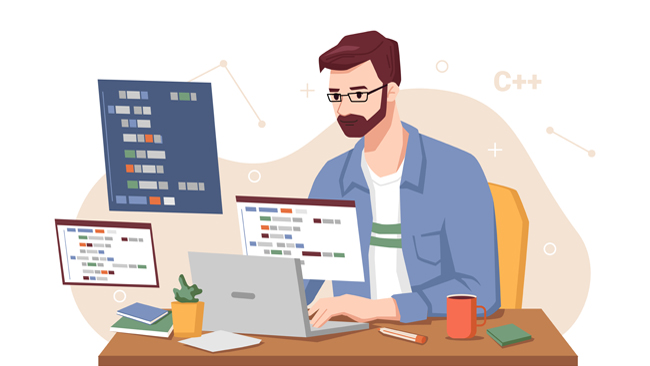Data is the lifeblood of any modern business. In today’s competitive landscape, the ability to make data-driven decisions quickly and efficiently is essential to success. However, traditional data management approaches are often complex, time-consuming, and expensive. This is where No-Code DataOps comes in.
In this article, Mark Stiffler, Optymyze expert, discusses the need for having no-code DataOps and how to integrate it successfully into your business.
What is DataOps?
In its most basic form, DataOps is a set of best practices for data management that enables organizations to more quickly and effectively respond to changes in their data environments. DataOps aims to help businesses continuously deliver high-quality data products by automating and streamlining data management processes.
No-Code Vs. Traditional Coding
The traditional coding approach is time-consuming and costly due to the need for specialized skills. Hiring a coder can be expensive. According to Business Insider, the average salary for a senior software engineer in the United States is over $187,000.
No-code platforms provide a low-cost alternative to traditional coding that is fast and easy to use. With no-code, businesses have a more user-friendly way to develop applications without coding skills. This allows organizations to build and deploy data-driven applications with little IT infrastructure quickly.
A New Approach
No-Code DataOps is a new approach to data management that leverages the power of no-code platforms to automate and streamline data operations. This new approach is designed to help businesses continuously deliver high-quality data products by automating and streamlining data management processes.
No-Code DataOps bridges the gap between the traditional coding approach and the newer no-code approach by providing a more user-friendly way to develop and manage data operations. This new approach is designed to help businesses reduce the time and cost associated with data management while increasing the speed and accuracy of data-driven decision-making.
Benefits of No-Code DataOps
No-Code DataOps is fast and easy to use. You can quickly develop and deploy data-driven applications without needing specialized skills or expensive coding resources. No-Code DataOps is also designed to help you automate and streamline data management processes. This can help you reduce the time and cost associated with data management while increasing the speed and accuracy of data-driven decision-making.
Some of the other benefits of No-Code DataOps include:
Collaborative Development Approach
No-Code DataOps provides a collaborative development approach that allows multiple users to work on data operations in real time. This collaboration is made possible by using no-code platforms, allowing users to share data and applications through a standard interface.
This collaborative approach can help businesses accelerate the development of data products and reduce the time and cost associated with data management.
Flexible Deployment Options
No-Code DataOps offers flexible deployment options that allow businesses to quickly deploy data products in the cloud, on-premises, or in a hybrid environment. This flexibility enables enterprises to choose the deployment option that best meets their needs.
Cloud-based deployments offer the advantage of scale data products on demand, while on-premises implementations provide the ability to control the data environment. Hybrid deployments offer the best of both worlds by providing the flexibility to deploy data products in the cloud or on-premises.
Extensible Data Model
No-Code DataOps provides an extensible data model that allows businesses to add new data sources and applications easily. This extensibility enables a company to quickly adapt to changes in their data environment and expand their data products’ reach.
The extensible data model also allows businesses to share data across multiple applications, making it easier to develop data-driven applications.
Powerful Data Processing
No-Code DataOps offers powerful data processing capabilities that allow businesses to quickly and efficiently process large amounts of data. This capability is made possible by using no-code platforms, which provide the ability to scale data processing on demand.
This powerful data processing capability can help businesses accelerate the development of data products and improve the accuracy of data-driven decision-making.
Continuous Change Management Framework
No-Code DataOps provides a continuous change management framework that helps businesses manage the changes to their data environment. This framework is designed to help companies to automate and streamline managing data operations.
The continuous change management framework can help businesses reduce the time and cost associated with data management while increasing the accuracy of data-driven decision-making.
Steps to Integrating No-Code DataOps in Your Business
Ready to start reaping the benefits of No-Code DataOps? Mark Stiffler, Optymyze expert, says there are a few key steps to take to get started:
1. Assess your business needs and objectives: What are your goals for data management? What processes do you need to automate? What data do you need to collect and analyze?
2. Evaluate your data environment: What data sources do you have? How is this data structured? What are the volume and velocity of your data?
3. Select a no-code platform: There are many no-code platforms on the market, so selecting one that meets your specific needs is essential.
4. Build your data product: Once you’ve selected a platform, you can begin building your data product. Start by creating a prototype to test the platform and get user feedback.
5. Deploy and manage your data product: After you’ve built and tested it, it’s time to deploy it. No-Code DataOps platforms offer flexible deployment options, so you can choose the option that best meets your needs.
Final Thoughts
With No-Code DataOps, businesses can quickly and easily develop data products, reducing the time and cost associated with data management. This powerful tool can help enterprises to develop data-driven applications and improve decision-making accuracy.




Leave a comment
Have something to say about this article? Add your comment and start the discussion.